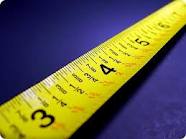 During last week’s webinar 5 Keys to Getting Your Sales Year Off to a Fast Start, I shared that a major difference between top performing salespeople and average ones is how and what top performers measure and track.
During last week’s webinar 5 Keys to Getting Your Sales Year Off to a Fast Start, I shared that a major difference between top performing salespeople and average ones is how and what top performers measure and track.
Top performers are maniacal when it comes to measuring and tracking key performance criteria. Average performers measure and track grudgingly.
An even bigger difference is what they measure. Average performers (and their managers) over emphasize activity and/or results. The primary reason for this is that it’s very easy to measure either of these.
The problem with measuring activity is twofold:
- All too often the activities measured have little to no impact on results. For example, making more sales calls does not necessarily translate into success. At best, they may correlate to success.
- The focus becomes activity, rather than results. If we measure and track the number of calls, the natural focus becomes about making more calls. Quality of the call or the appropriateness of the contact is ignored. This often translates into increased activity, increased costs and less success.
It can be just as bad to over emphasize results. Again there are two issues with an over-focus on results:
- We do not control results. I could do everything right and still not make the sale.
- Results are trailing indicators, and are not predictive of success.
Top performers measure what I refer to as efforts. Here’s my definition of an effort:
- It’s a cause of sales.
- It can be influenced, meaning that we have control over whether it happens or not.
- It’s one of a critical few (you should never have to track more than 5 efforts).
Greg Maddux, one of the great pitchers of all times, never kept track of how many hits he gave or, or even balls and strikes. Instead he kept track of how many times he executed his pitch to plan. He knew he had no control over the result of a pitch, and that good execution would lead to good results over time.
Try it; you’ll be impressed with the results.

 Doug Davidoff
Doug Davidoff